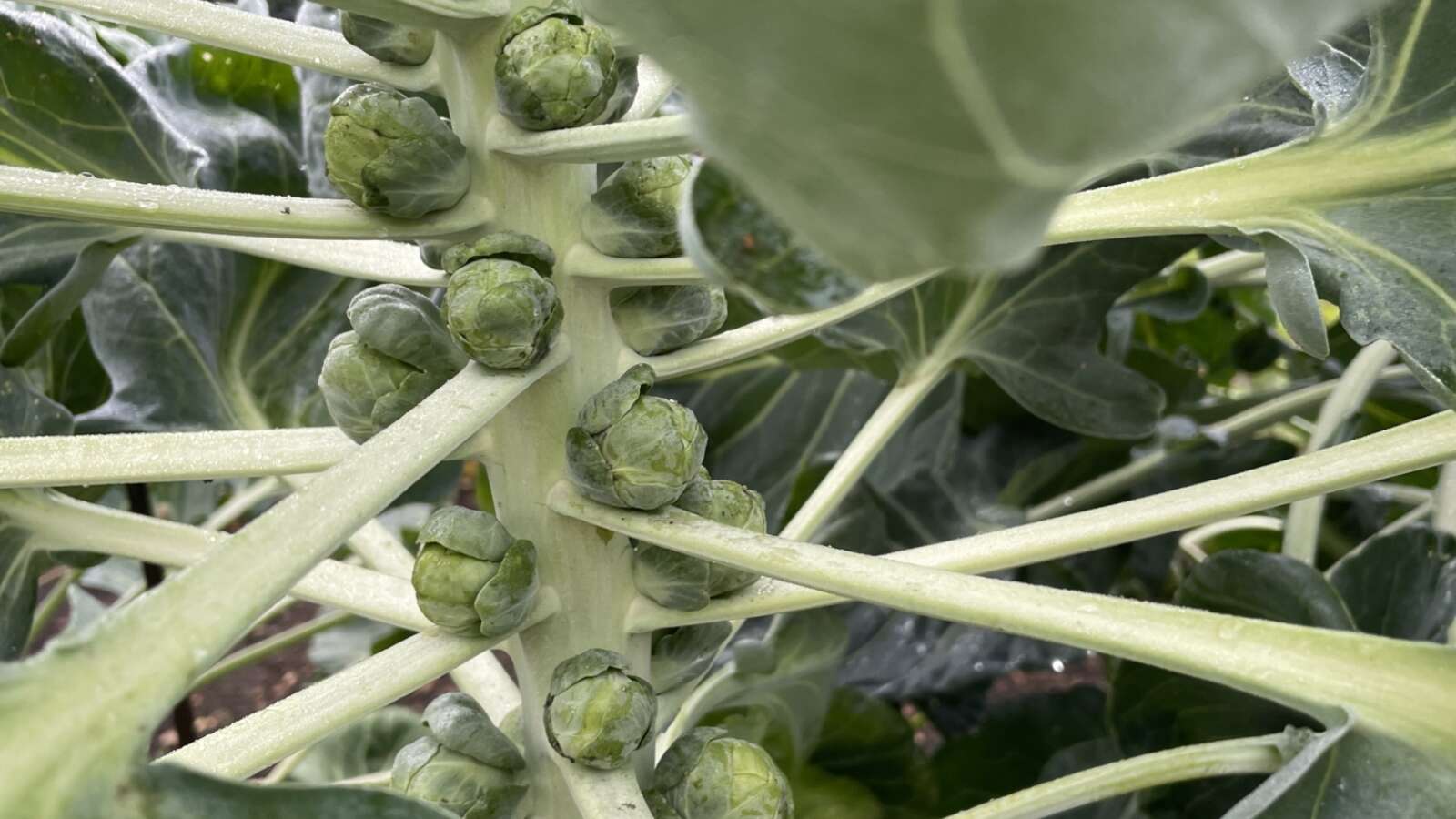
Brussels sprouts
Sprouts can taste better after frost. Use the top leaves as you would a cabbage.
| Growing calendar | |
|---|---|
| Sow outdoors | Mar-Apr |
| Plant out | End May-mid Jun |
| Harvest | End Sep-mid Feb |
How to grow Brussels sprouts
Sow sprout seeds 0.5cm deep in pots or seedbed. Plant out Brussels sprout seedlings when 10cm tall at 60cm apart in firm, fertile soil with the bottom leaves touching the soil.
Harvesting and using Brussels sprouts
Cut or tug sharply to remove sprouts ('buttons') when 3cm across and tightly closed, working up the stem. Sprouts can taste better after frost. Use the top leaves as you would a cabbage.
Tips for growing Brussels sprouts
Like all brassicas, Brussels sprout plants need fertile soil to flourish. Add plenty of organic matter to the planting site or grow a green manure in the autumn before planting.
Mulch to conserve moisture. Plants are top-heavy so stake and pull soil around the stems ('earth-up'). Remove yellowing leaves. Cover with netting to help protect from pests.
Saving seed from Brussels sprouts
They are biennial, being sown and grown one year to flower and seed the next. Although they appear diverse, all brassicas have been selected from just two common ancestor species and within species, each will readily cross with another, so must be isolated. View our detailed seed saving advice here.
| Growing notes | |
|---|---|
| Difficulty | Easy |
| Germination time | 7-12 days |
| Average time to harvest | From 20 weeks |
| Equipment needed | Stakes, twine, netting |
| Average plant size | 75cm tall, 40cm wide |
| Family group | Brassica: swede, calabrese |
| Latin name | Brassica oleracea |
| Key nutritional content | Folate, vitamin C, fibre |
| Seed saving notes | Biennial, needs isolation |